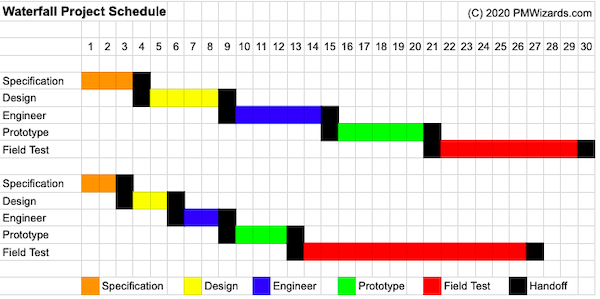The Predictive or Waterfall approach to projects
The predictive or waterfall approach to projects work best when the work to be done is well-understood and the final product is clearly defined. The waterfall metaphor is relate to the sequence of steps as presented in a gantt chart:

In civil engineering, for example, buildings are clearly defined by architects from the start and are usually produced using well-known techniques so it is possible to plan every step before construction starts with great accuracy and precision.
In a predictive project, it is critical to follow the plan. By continuously monitoring the work any deviations from the plan are quiclky spotted and can be corrected. Small changes are possible but must conform to strict Change Management procedures.
A complete description of the product to be delivered by the project must be formed right from the start and any changes must be approved before updating the project documentation. Budgeting and schedule are defined early in the project and monitored to prevent run-overs.
The sequence of work steps follow a predetermined path and is usually long thus making feedback from users impossible until the work is done, this may induce rework since adaptations are not possible at early phases.
Predictive projects are usually very efficient in terms of resource utilisation since they can be optimized for minimum time and cost. Numerous techniques to manage resources allow the project manager to reduce or extend the duration of the project.
Go back to project approaches